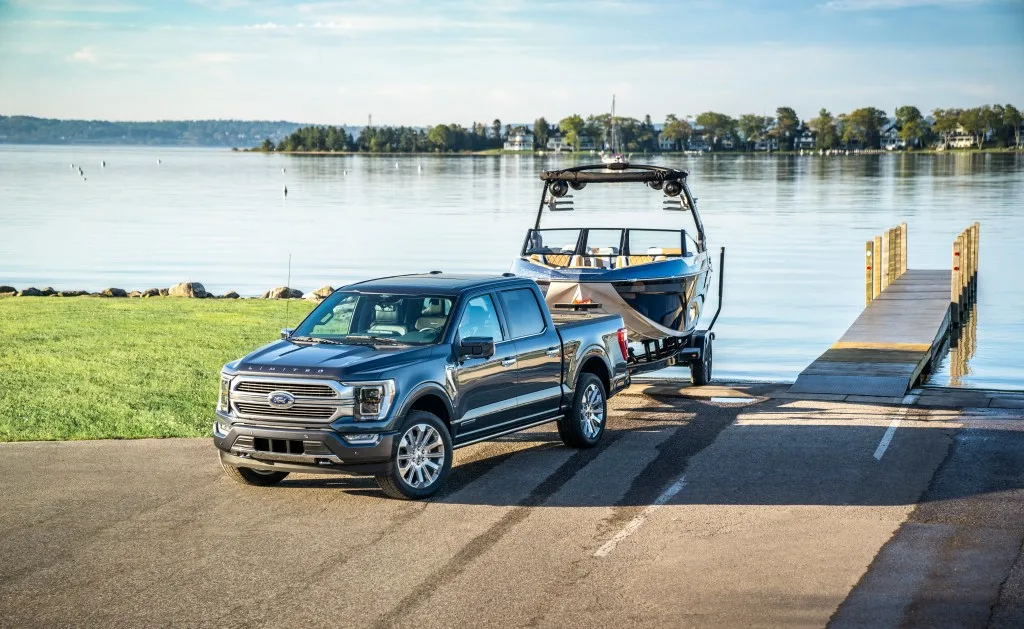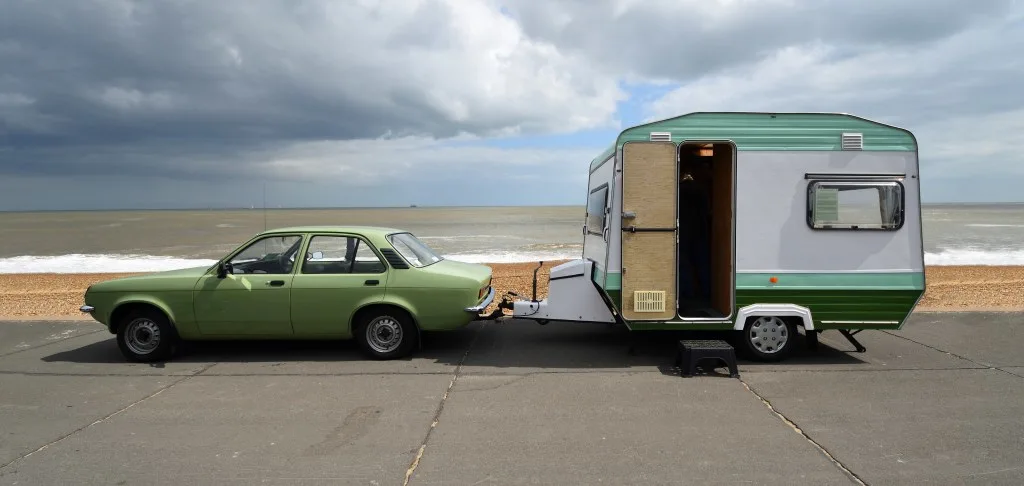Towing is an entirely different experience than the typical driving experience. If you’re new to towing, it can be a terrifying and intimidating situation. Luckily, there are some unwritten rules for towing you can follow to help keep you safe while hauling.
Today, we’re sharing 10 unwritten rules for towing and providing you with some tips to make your next towing experience a breeze. Let’s get started!
Is Towing an RV Difficult?
Towing an RV can be challenging, especially if you have no towing experience. It will require you to change some of your driving habits and to be more aware of the people and objects around you. However, towing an RV becomes easier with experience.
It’s normal to be nervous on your first few RV adventures, but the entire experience becomes much more comfortable the more you can tow your RV.

How Do You Tell if You’re Towing Too Much?
One of the most critical factors of towing is staying within your vehicle’s towing capabilities. Many regularly towing drivers will try to avoid exceeding 80% of their vehicle’s towing capacity. They need to be aware of how much a load weighs and how much weight it will put on the car.
The truck’s rear end will sag significantly when a vehicle tows too much weight. Too much typically reduces traction and steering as more weight is on the rear than on the front axle. Exceeding your vehicle’s towing capacity increases your car’s wear and tear and creates an unsafe driving experience. We recommend knowing your vehicle’s towing number (towing capacity, payload capacity, and GVWR (gross vehicle weight rating) and checking to ensure you are within them.
The best way to ensure you are safely within your towing capabilities is to drive your RV across a CAT Scale.
These weight scales may be familiar sights at truck stops, but they’re available for any vehicle. Using their smartphone app, you can do almost everything you need at a CAT Scale. It makes it easy to store your weight records and locate scales near you.

10 Unwritten Rules for Towing
The official rules of the road will vary by state. However, there are some unwritten rules that we think apply practically everywhere. Let’s dive in and look at the 10 most critical unwritten rules for towing you should be following.
Start with a Full Fuel Tank
Filling up your fuel tank can be challenging when you’re new to towing. Getting in and out of some fuel stations can be a nightmare. There might not be enough room to make turns or maneuvers, which can cause you to damage your vehicle, RV, or someone else’s property. To avoid this, you should always start your RV trips with a full fuel tank.
Even if you have a strong and capable truck for towing, the fuel efficiency will take a nosedive when you hitch up a trailer. The truck will have to work harder than usual, especially if you’re climbing hills or mountain passes. Some drivers with gas engines will often experience single-digit MPGs in some driving situations.
Always Check Tire Pressure
Before you pull out onto the road for an RV adventure, you should always check the pressure on your vehicle and RV tires. Checking is an excellent opportunity to look for potential issues with your tires, like uneven wear of the tread or the potential that there is an object in your tires. It only takes an extra minute, but it is well worth it.
One of the leading causes of tire blowouts is underinflated tires. A tire with an insufficient amount of air creates a tremendous amount of friction between the surface of the road and the tire tread. It can produce heat that can break down the tire’s rubber compounds and lead to a severe issue. Blown tires can cause thousands of dollars in damage to an RV and derail future RV adventures for weeks or even months.

Do a Walkaround Before Leaving
You should always do a complete walkaround before leaving a campsite or any other parking space. Ensure you’ve closed all the slides, raised all the jacks, and hitched your trailer correctly to your tow vehicle. A walkaround can help you avoid making a costly mistake that will significantly impact your bank account.
A walkaround can also help ensure you’re not leaving anything behind when you leave. Check the campsite or parking spot for anything you might have placed on the ground while camping or parked. You don’t want to have to rebuy tools or camping gear because you left it behind at a stop.
Use a TPMS
A tire pressure monitoring system, or TPMS, is an essential piece of equipment we think every RVer should own. These high-tech gadgets come with sensors that you put onto your tires’ valve stems. These sensors typically connect wirelessly to an in-cab monitor so the driver can monitor the tire pressure and temperature. The system will trigger an audible alert if it detects any potentially hazardous changes.
Some RVers have had tires lose air as they travel down the highway. As a result, these tires could explode, so the TPMS alerts the driver of a potential issue. Some unaware drivers have had other drivers flag them down or discovered the damage when they arrived at their campsite.
Practice, Practice, Practice
The best way to improve your towing skills is to practice. If you’re looking for an excuse to practice towing your RV, book a campsite at a nearby campground. It can be tempting to go to the same campground repeatedly. However, since every campground and every towing situation is different, we recommend finding new places to camp as often as possible, especially if you want to improve your towing skills.
Slow Down
You will drastically increase your stopping distance when you tow thousands of extra pounds down the highway. The best way to combat the increased stopping distance is to keep an eye on your speedometer. Interstate speed limits can be 75 or 80 miles per hour, but safe RV drivers rarely exceed 65 miles per hour.
Slowing down and watching your speed not only improves your safety but also helps improve your fuel efficiency. No matter how much weight your vehicle weighs, the harder you make the engine work, the less efficient it will be when it comes to fuel. You should never be in a hurry while RVing. Sit back and enjoy the road!
Use Your Mirrors
You should always use your mirrors when driving, but using your mirrors when towing will be essential. Blind spots while hauling can be massive, and having suitable mirrors can help ensure you don’t miss a vehicle driving in one of your blind spots. If your vehicle doesn’t have towing mirrors, you can purchase after-market mirrors or attachable mirrors that will increase your ability to see around you.
Before hitting the road, you should adjust all of your mirrors for optimal sight. If you’re hauling a large RV behind you, your rearview mirror will be useless. Some RVers install backup cameras on their RV that they can turn on while driving to see traffic or activity behind their rig.

Make Wide Turns
Almost anybody can tow an RV on the interstate. You simply press the accelerator and drive straight. However, if you take your RV off the interstate, you better get comfortable making turns. One of the keys to making turns while towing is making wide turns.
Depending on what you are towing, a trailer will typically take a tighter turn than the tow vehicle. If you don’t compensate for this, you could find yourself running over a curb or side-swiping a sign or object. A driver may need to use the opposing oncoming lane to navigate a turn while towing. If that’s the case, give them time and space to get out of the way.
You should avoid forcing a turn that seems questionable. When in doubt, get out and look. It may take a bit longer, but you’ll avoid damaging your trailer and paying for an expensive repair.
Make a Checklist
There are quite a few things that the driver and co-pilot must do to tow a trailer from point A to point B safely. Skipping a step or doing them out of order can cause a dire situation. We’ve seen RVs come unhitched, landing gear damaged, and even awnings ripped off, all because the RVers didn’t take the time to make a checklist.
While many things will be similar on a towing checklist for all RVers, your towing list will be unique to you and your setup. Some have checklists for 72 hours, 48 hours, 24 hours, and day-of travel days. These checklists should include any task or item you want to ensure gets done before you hit the road. So don’t be afraid to add any job you need to your checklist.
Know Your Route
When you drive a standard passenger vehicle, you can hop in it and hit the road for a cross-country road trip with nothing but a GPS and a hearty supply of snacks. However, towing an RV or trailer requires a bit more effort. Some roads and areas simply can’t handle larger vehicles like RVs. You can be in a serious situation if you turn down the wrong road.
You should know the height, length, and weight of your RV. We recommend writing it down and putting it on a sticky note on your dash. This reminder will help when you find yourself traveling at a high rate of speed towards a low clearance bridge or weight restriction.
Make sure you measure the height of your rig when hitched up to your tow vehicle; don’t just take the manufacturer’s word for it. An inch or two can make the difference between driving smoothly under a low clearance and having to do a major repair to the roof of your rig.
We recommend RVers invest in an RV-specific GPS unit. These units can store the weight and dimensions of your RV and help you to avoid any routes that aren’t compatible with your rig. They’ll even help you avoid areas with propane restrictions and other not-so-common circumstances.
Always Obey These Unwritten Rules for Towing
When you follow these unwritten rules, you’ll naturally become a better driver. We want you to follow these rules because it helps you and other drivers to be safe while you’re on an adventure.
Breaking one of these rules can cause a significant delay in your experiences and leave your RV or tow vehicle out of commission for a considerable time. So be a safe driver and follow these unwritten rules for towing.
Discover the Best Free Camping Across the USA
To be honest with you, we hate paying for camping. There are so many free campsites in America (with complete privacy).
You should give it a try!
As a matter of fact, these free campsites are yours. Every time you pay federal taxes, you’re contributing to these lands.
Become a FREE CAMPING INSIDER and join the 100,000 campers who love to score the best site!
We’ll send you the 50 Best Free Campsites in the USA (one per state). Access the list by submitting your email below: